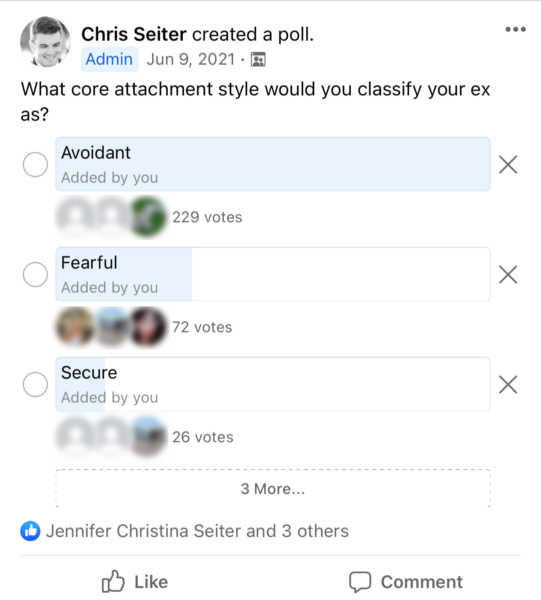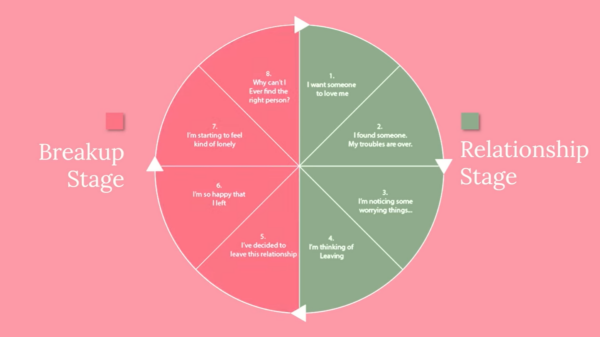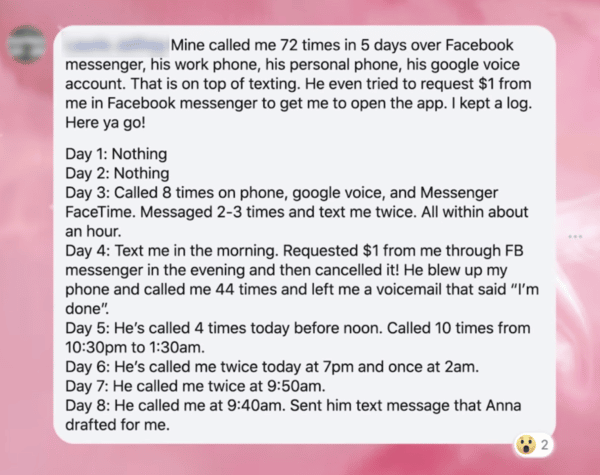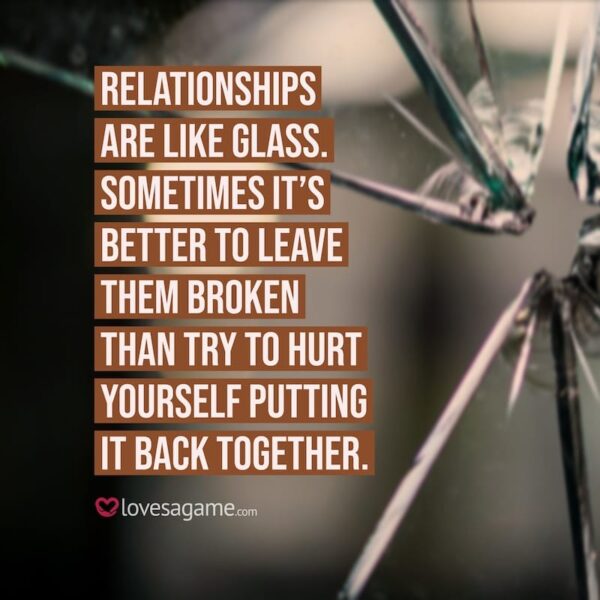Today we’re going to talk about how your ex feels when you ignore them.
I’ve thought long and hard about how to approach this and I think I’ve found a really unique way of tackling this subject. You see, typically when you go online and search for answers to questions good ole Google loves to put all kinds of articles in front of you.
Many of these articles barely scratch the surface of what you need to know and for some reason they all seem to contain the same broken format.
Signs…
Tips…
You get the idea…
In reality this actually makes no sense. Someone who is literally searching for an answer to how an ex feels when they ignore you don’t need tips or signs. They need to understand an exes response to silence.
Luckily, we have so much experience seeing this because we recommend the no contact rule so frequently to our clients.
Honestly though, I think the correct way to diagnose responses is to look at how each attachment style handles being ignored and then from there we can infer their feelings.
So, here’s what I want to do.
- Help You Diagnose Your Exes Attachment Style
- Take A Look At How Avoidants Respond To Being Ignored
- Take A Look At How Anxious Individuals Respond To Being Ignored
- Take A Look At How Fearful Individuals Respond To Being Ignored
- Take A Look At How Secure Individuals Respond To Being Ignored
Let’s begin!

What Are Your Chances of Getting Your Ex Boyfriend Back?
Take the quizLet’s Diagnose Your Exes Attachment Style
So, quick crash course.
Everyone always seems to have a fancy way of categorizing attachment styles.
- Dismissive avoidant
- Avoidant
- Anxious…
- Ambivalant
- Fearful…
It can get really confusing really fast but I believe in simplifying things which is why I’ve always referred to attachments styles in four different ways.
- The Secure Style
- The Avoidant Style
- The Anxious Style
- The Fearful Style
But we are here because we need to figure out what attachment style your ex is. Luckily, there is a relatively straightforward way of doing that and it all revolves around core wounds.
Now, the goal always with attachment theory is to find yourself in the securely attached category.
Unfortunately, most of the individuals we work with have insecure attachments and it’s those insecure attachments that have the core wounds that when irritated will trigger the insecure behaviors.
So, let’s tackle figuring out if your ex has an insecure attachment first. Really what you are going to want to look at is if they experience the following core wounds.
- Anxious Core Wound = A Deep Fear Of Abandonment
- Avoidant Core Wound = A Deep Need For Independence
- Fearful Core Wound = Bouncing From One Extreme To The Next
So, what does that look like in real life?
Well, someone with an anxious core wound, when they sense a breakup is oncoming will panic and try to fix the problem, to an almost annoying degree. They’ll constantly check in with you, ask how you are doing. Every little infraction that they deem spells trouble in paradise will cause them to overcrowd you.
Someone with an avoidant core wound is the exact opposite. If they feel they are being overcrowded or losing independence they’ll basically dip out and avoid. Sometimes you’ll even see big life commitments that cause them to feel like they’ll lose their independence will freak them out.

What Are Your Chances of Getting Your Ex Boyfriend Back?
Take the quizAnd then we have the fearful individuals. That’s where things get wild. They will literally go from one extreme to the next. One minute they are trying to “save your relationship” and the next they want nothing to do with you.
But you aren’t here for this. You are here to figure out how each of these individuals respond to being ignored.
A Look At How Avoidant Exes Respond To Being Ignored
All of 2021 and 2022 I spent researching avoidants.
Why?
Well, my team and I have found that avoidants tend to be the most common ex that we encounter.
By a pretty large margin.
Here’s what’s interesting about avoidants. Many of them will follow this path after a breakup,
The relationship death wheel of which there are eight stages.
- I want someone to love me
- I found someone yay
- Hey, they aren’t perfect
- I’m going to leave
- I have left
- I’m so happy I left
- Yo… I’m getting kinda lonely
- WHY IS THIS ALWAYS HAPPENING TO ME
But the thing that is of interest to us is actually stage #6.
This is called separation elation and I’ve talked about it a lot in articles.
After a relationship ends, people with an avoidant attachment style tend not to show much anxiety or distress, often feeling an initial sense of relief at the relinquishing of obligations and the sense that they are regaining their self-identity, and not tending to initially miss their partner – this is “separation elation” as the pressure to connect is gone.
So, how does the avoidant respond to being ignored.
They actually enjoy it!
At first.
But don’t worry, stage #7 is just around the corner.
A Look At How Anxious Exes Will Respond To Being Ignored
While avoidant exes are on one end of the spectrum, you know, avoiding you.
Anxious exes are on the complete other end.
It’s important to note that anxious exes are without a doubt the rarest type of ex we encounter on our work here at Ex Boyfriend Recovery.
So, what typically happens when you ignore an anxious ex?
Well, usually something like this,

What Are Your Chances of Getting Your Ex Boyfriend Back?
Take the quizFor the record, this is taken directly from a client in our community.
Wild, right?
This is an anxious response to silence. They’ll do anything they possibly can to get you to respond.
It’s akin to a child throwing a tantrum. Except it usually plays out over texts, calls and unannounced show ups.
A Look At How Fearful Exes Respond To Being Ignored
Fearful avoidants are super interesting to me because they are so rare.
And their response to silence is unique.
Generally it’s been my experience that when you ignore a fearful avoidant they first go through separation elation but it’s an extremely shortened version. One that lasts, maybe a week before that anxious side starts kicking in.
But they usually don’t swing to the extreme as simple as a snap. Rather, they’ll do something passive aggressive over social media to get your attention.
Posting one of those, “I’m better that I’m single now” type posts,
They are doing this almost as a tester to see if you’ll break first. If you don’t, then you can expect them to escalate and start reaching out. Usually it’s not going to be as extreme as a full on anxious individual but there will be hints of it.
Here’s the important bit though.
If you don’t respond or at least nurture that anxious side they’ll retreat further inwards towards their avoidant side and take even longer before their anxious side gets triggered again.
This is why one of the big changes we’ve already made to our program is that we’ve started recommending shorter no contact periods for clients with fearful avoidant exes.
A Look At How Secure Exes Handle Being Ignored
What is the secure way to handle a breakup?
Well, I think it’s some variation of,
- Allowing yourself to feel your feelings
- Seeking support from trusted individuals
- Distracting yourself
- Healing
But there’s one thing that separates the secure ex from the insecure ex. They are confident that they will get over the breakup.
Usually secure people will respond to being ignored by trying to reach out a few times, taking the hint that you don’t want to talk and then backing off for a bit until you are ready to talk.
Of course, secure exes are actually even rarer than anxious exes in our program.
Want to know why?
Because often secure exes don’t feel the need to go online for help with their breakups. They trust themselves to do what needs to be done and that’s not a slight on anyone here.

What Are Your Chances of Getting Your Ex Boyfriend Back?
Take the quizIt’s purely a numbers game.
The numbers tell us that the most likely pairing that we are going to see is anxious (client) and avoidant (ex.)
Secure exes in my business are a little like unicorns.



